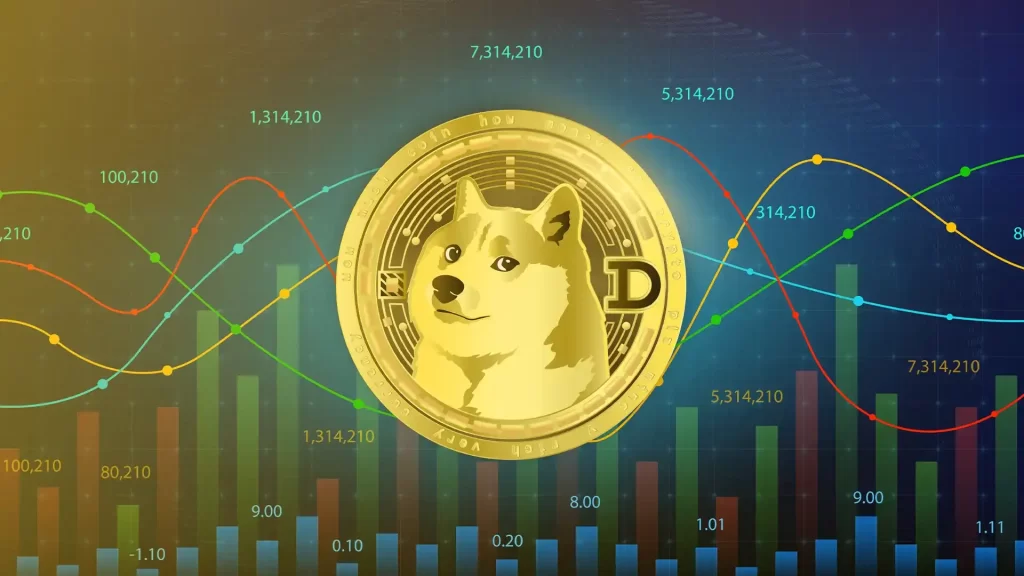When the DOGE token appeared
Dogecoin (DOGE) was created on December 6, 2013 by two developers: Billy Marcus, an IBM engineer, and Jackson Palmer, an Adobe marketer. They launched the project as a joke, parodying the cryptocurrency boom of the time, particularly bitcoin.
The name and logo, featuring a Shiba Inu dog, comes from the popular internet meme "Doge" that flooded the web in 2013 thanks to funny pictures with comic captions.
What it is
Dogecoin is a decentralized, open-source cryptocurrency built on the Litecoin blockchain (which is a fork of Bitcoin).
Technically, DOGE uses the Scrypt hashing algorithm, which makes it less energy-intensive for mining compared to bitcoin (SHA-256).
Unlike BTC, Dogecoin has no emission limit: 5 billion coins are added to circulation every year, making it an inflationary currency. A block is generated every minute, which ensures faster transactions than Bitcoin.
Initially conceived as a "fun" cryptocurrency for microtransactions and tipping on the Internet, DOGE has grown into a full-fledged asset with a large community and market capitalization.
History of development
- 2013-2014: Birth and first steps
After its launch, Dogecoin quickly gained popularity due to its absurdity and friendly community. As early as December 2013, DOGE attracted thousands of users on Reddit and Twitter who began using it for tipping and charity. In 2014, the community raised $50,000 in DOGE to sponsor NASCAR driver Josh Wise, whose car was decorated with a shiba-inu meme. The same year, they raised funds for charitable projects such as building wells in Kenya. - 2015-2017: The lull and the departure of the founders. In 2015, Jackson Palmer left the project, disappointed with the commercialization of cryptocurrencies. Billy Marcus also left, selling his DOGEs. The cryptocurrency lost its active development, but the community continued to support it. The price remained low, often below $0.001.
- 2018-2020: Return of attention. DOGE started growing along with the market in 2017-2018, peaking at $0.017 in January 2018. But the real turnaround came in 2020, when the TikTok trend "Pump DOGE" raised the price to $0.003. The community was actively promoting the idea of "Dogecoin to $1," even though it seemed like a fantasy.
- 2021: Takeoff thanks to Elon Musk. The year 2021 was a turning point. Elon Musk, the CEO of Tesla and SpaceX, began tweeting regularly about Dogecoin, calling it the "cryptocurrency of the people." His posts, ranging from jokes to announcements about accepting DOGE for payment at Tesla, sparked explosive growth. In May 2021, the price reached an all-time high of $0.74, and the market capitalization exceeded $90 billion. Musk even appeared on Saturday Night Live, where he called DOGE a "scam" in a joking manner, which led to a sharp drop in price.
- 2022-2023: Fluctuations and stabilization. After the peak, DOGE underwent a correction, but maintained its position in the top 10 by capitalization. In 2022, Musk bought Twitter, and rumors of DOGE integration raised the price to $0.15. In 2023, the project received an update from the developer community, improving transaction speed and security.
- 2024-2025: Current status. As of March 14, 2025, according to the preliminary review, DOGE is trading at $0.174048 with an increase of +3.31% per day. It remains in the top 10 cryptocurrencies, although its growth often depends on external factors, including Musk's tweets and market trends.
Why DOGE is interesting
- Community: Dogecoin has one of the most active and dedicated communities in the crypto space. Its humor and friendliness attract newcomers, and its numerous charitable initiatives add to its positive image.
- Availability: The low price (compared to BTC or ETH) and fast transactions make DOGE convenient for micropayments and experiments.
- Influence of the Mask: Elon Musk has become the unofficial "patron" of DOGE, and his tweets can still cause price spikes. This adds to the token's speculative appeal.
- Memorable nature: DOGE is a unique example of how a joke can become a serious asset. His story proves that cultural phenomena can have economic value.
- Inflation model: The absence of an emission limit makes DOGE less scarce than Bitcoin, but at the same time stable for use as a currency and not just a storage asset.
Dogecoin is more than a meme. From a humorous experiment, it has grown into a billion-dollar cryptocurrency, becoming a symbol of how community and pop culture can influence finance.
Its interest lies in its combination of simplicity, chaotic history, and unpredictability. Although DOGE is unlikely to replace bitcoin as "digital gold," it remains a unique phenomenon that lives on people's faith and the occasional tweet from you-know-who.


